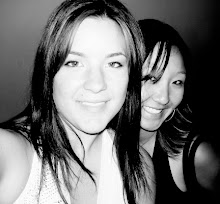My ideas for this project are taking shape. What I am truly interested in is a modern architecture that is not created by an architect. I am interested in dwellings that are built using the materials available, the skills at hand, and all to fulfill the needs of the occupant. I want to focus on structures that are for extended living. Some tent cities, like the one in florida which has more sophistication and organization to it, may be a good way to explore these types of homes; but I think limiting myself to these communities could be disabling.
In the next few days, hopefully, I will have access to a scanner so that I can post pictures of some of the structures I have found that will shift the direction of my research to some extent. One is of a structure that was located in a 'passive solar community center' deep in the forest of North Carolina. This home is created from sheets of plywood to create three dome like structures inspired by Buckminster Fuller's geodesic domes. These domes, now demolished due to property changes, went through many phases of physical change to improve the quality of life. All of these changes however, were inspired/envisioned/and fulfilled by a small community with no formal building background, simply with the skills they came with and learned through process. I will also include photos of a somewhat traditional looking cabin that was all built by my new acquaintance Anthony through 90% salvaged material. These structures are inherently passive and economic, as they are generally off the grid completely, and created by the individual for a living space that works for them.
I am in the process of getting a few more books that will help me as this project continues. The first is 'Shelter' by Lloyd Kahn, the second is 'The Handmade House' by Art Boericke, and the third is 'The Barefoot Architect' by Johan van Lengen. Hopefully I will be able get these shortly.
The following excerpt is the preface of 'Shelter,' which I think defines the character of what I am trying to achieve:
In times past people built their own homes, grew their own food, made their own clothes. Knowledge of the building crafts and other skills of providing life's basic needs were generally passed along from father to son, mother to daughter, master to apprentice.
Then with industrialization and the population shift from country to cities, this knowledge was put aside and much of it has now been lost. We have seen an era of unprecedented prosperity in America based upon huge amounts of foreign and domestic resources and fueled by finite reserves of stored energy.
And as we have come to realize in recent years, we are running out. Materials are scarce, fuel is in short supply, and prices are escalating. To survive, one is going to have to be either rich or resourceful. Either more dependent upon, or freer from centralized production and controls. The choices arc not clear-cut, for these are complex times. But it is obvious that the more we can do for ourselves, the greater will our individual freedom and independence be.
This book is not about going off to live in a cave and growing all one's own food. It is not based on the idea that everyone can find an acre in the country, or upon a sentimental attachment to the past. It is rather about finding a new and necessary balance in our lives between what can he done by hand and what still must be done by machine.
For in times to come, we will have to find a responsive and sensitive balance between the still-usable skills and wisdom of the past and the sustainable products and inventions of the 20th century.
Of necessity or by choice, there may be a revival of handwork in America. We are certainly capable, and these inherent, dormant talents may prove to be some of our most valuable resources in the future.
This book is about simple homes, natural materials, and human resourcefulness. It is about discovery, hard work, the joys of self-sufficiency, and freedom. It is about shelter, which is more than a roof overhead.
– Lloyd Kahn, 1973


reading the preface from shelter, it makes me think about how the future is portrayed in some sci-fi films. Where there is a huge rift between the wealthy and the commoner.. although we are already seeing a kind of rift forming. This part right here made me think that
ReplyDelete"And as we have come to realize in recent years, we are running out. Materials are scarce, fuel is in short supply, and prices are escalating. To survive, one is going to have to be either rich or resourceful. Either more dependent upon, or freer from centralized production and controls."
Yeah, I thought the most powerful part of the preface was the second half of that quote. I think everyone is finally feeling the truth in those words. Buying locally has suddenly become very important to some people, supporting our own economy has suddenly become very important to some people. It wasn't until this past decade that the amount of outsourcing we incorporate into our companies was a concern.
ReplyDelete